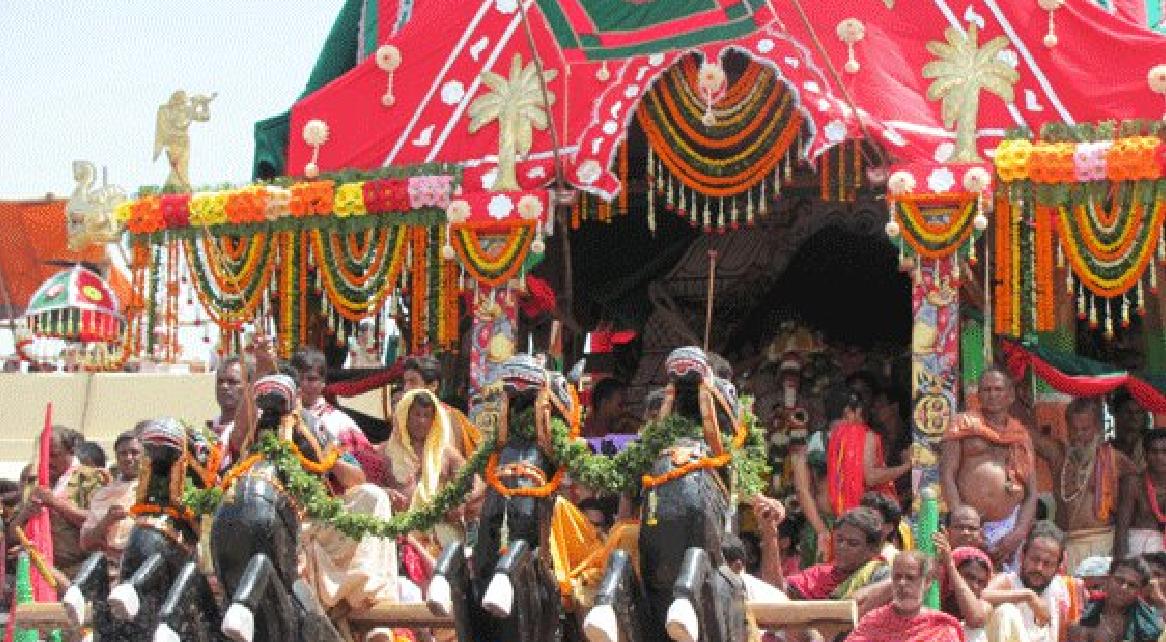Facts about Taladhwaja Rath: The Powerful Chariot of Lord Balabhadra

Taladhwaja Rath: The Powerful Chariot of Lord Balabhadra

Of the three majestic chariots adorning the divine Rath Yatra at Puri, Odisha, the **Taladhwaja Rath** occupies a place of grandeur and toughness. It is Lord Balabhadra’s sacred chariot, elder brother of Lord Jagannath, and a symbol of great strength, protection, and dharma.
—
The Rath Yatra and Its Chariots
The **Rath Yatra**, or Chariot Festival, is a grand festival held every year in which Lord Jagannath, Lord Balabhadra, and Devi Subhadra are brought out from the sanctum of the Jagannath Temple and taken to the Gundicha Temple, a distance of 3 km away. Each deity has a specially designed chariot that symbolizes their divine qualities.
While Lord Jagannath is carried on the **Nandighosha**, and Devi Subhadra is carried on **Darpadalana**, **Taladhwaja** is the vehicle that transports the powerful Lord Balabhadra.
—
### **Taladhwaja Rath: Structure and Features**
The following are the salient features of **Taladhwaja Rath**:
* **Name:** *Taladhwaja*, which means “Palm Tree Flag”
* **Deity:** Lord Balabhadra
* **Color Scheme:** Red and green
* **Height:** Approximately 43 feet (13.2 meters)
* **Wheels:** 14 enormous wooden wheels
* **Charioteer:** *Matali*, the divine charioteer
* **Flag:** Distinct with the emblem of a palm tree (Tala)
* **Guarding Deity:** Vasudeva
* **Horses:** Four horses that are black in color, named *Tivra*, *Ghora*, *Dirghasharma*, and *Swarnanava*
All aspects of the chariot are carefully made, done with traditional woodwork by devoted craftsmen who labor without using a single iron nail. The process starts on **Akshaya Tritiya**, and the entire chariot is finished in time for the grand celebration during **Ashadha month (June–July)**.
—
### **Spiritual and Symbolic Meaning**
Taladhwaja symbolizes strength, discipline, and elder brotherly protection. Lord Balabhadra is the personification of strength and righteousness, and his chariot’s commanding presence on Puri streets fills one with awe and respect.
* The **red** represents courage and valor.
* The **green** is a representation of nature, fertility, and serenity.
The 14 wheels are also symbolically meaningful and are believed to represent the 14 worlds (lokas) in Hindu cosmology.
—
### **Rituals that Involve Taladhwaja**
A few rituals are conducted pre, during, and post the Rath Yatra, including:
* **Snana Purnima:** The ritual bath of the deities.
* **Anasara:** Rest period where the deities are concealed from public sight after the bath.
* **Rath Yatra Day:** Lord Balabhadra rides Taladhwaja and leads the chariot procession.
* **Hera Panchami:** Symbolic incident of Goddess Lakshmi displaying her feelings.
* **Bahuda Yatra:** The trip back of the chariots from Gundicha to the central temple.
* **Suna Besha:** The golden dress day, when the deities are adorned with gold ornaments.
—
### **Believers and Beliefs**
Pulling the Taladhwaja chariot is considered a sacred act. Devotees believe it grants blessings, washes away sins, and leads one closer to moksha (liberation). Lord Balabhadra, known for his just nature and immense strength, is a protector and guide for devotees seeking moral direction.
—
### **Conclusion**
The **Taladhwaja Rath** is not merely a wooden chariot—it is a holy vehicle that contains divine power and centuries of spiritual heritage. As it moves through the streets of Puri, accompanied by chanting, drumming, and millions of followers, it is a traveling temple, bringing people from all stations together in worship and celebration.
Whether pilgrim or traveling observer, seeing the Taladhwaja Rath move is an unforgettable spiritual experience—a breathtaking moment of insight into India’s living heritage.
—





